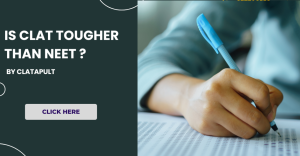1. Find the odd one out from the given series of options.
(a) Sherlock Holmes
(b) Agatha Christie
(c) Sir Arthur Conan Doyle
(d) Dan Brown
2. Peripheral : Central :: Obstreperous : ?
(a) Placid
(b) Raucous
(c) Febrile
(d)Stubborn
3. Tacit : Unspoken :: Palliative : ?
(a)Tyrannical
(b) Curative
(c) Festive
(d) Restive
4. The lawyer was __________ for conduct that was in complete violation of legal procedures: he was found to have __________ a member of the jury.
(a) reprimanded – observed
(b) disbarred – suborned
(c) expelled – questioned
(d)commended – mislead
5. Unequivocal : Ambiguous ::
(a)Enervating : Invigorating
(b) Unprepossessing : Ugly
(c)Tenuous : Weak
(d)Parochial : Xenophobic
6. Destitute : Impoverished ::
(a)Undermine : Glorify
(b)Flagrant : Blatant
(c) Disingenuous : Transparent
(d)Dishevelled : Ordered
7. Protagonists of human rights vehemently oppose capital punishment. Their opposition stems mainly from three reasons. Firstly, man cannot terminate what he cannot generate. Secondly, the function of punishment is to reform the culprit. Thirdly, a culprit should be given an opportunity to repent. Admittedly, death penalty fails on all three counts. However, the defenders argue that a person is punished because he has to pay for his deeds. Reformation or repentance, according to them, is peripheral. Hence, death penalty is admissible.
Which one of the following is the focus of this debate?
(a) Man’s rights and privileges
(b) Nature and purpose of punishment
(c) Prevention of crime
(d) Mercy and revenge
(Questions 8 and 9) A tourist can tour utmost four places out of A, B, C, D, E, F and G. Out of four, not more than two can come under holiday tour and at least two must come under business trip.
The break up is as follows:
a. A, B C and D – Business tour
b. E, F and G – Holiday tour
8. Let us assume that the following restrictions hold good:
A) If A is included, then both C and G are excluded.
B) If neither E nor F is included, then B or G or both of them can be included.
C) If G is included, then D cannot be included.
Which one of the following combinations is possible?
(a) A, C, E and F (b) B, G and E (c) A, D and G (d) A, B and D
9. Supposing that the following restrictions hold good:
A) A can be included provided C is included.
B) E is included provided B or G is included but not both.
C) C can be included provided at least D or F is excluded.
Which one of the following is a certainty?
(a)A, B, C and E (b)A, C, D and F (c) B, C, D and E (d) A, B, C and F
10. Seven persons P, Q, R, S, T, U, V and W are to be assigned seven adjacent chambers on the same floor in an apartment according to following conditions:
I. U is assigned as far away from R as T is.
II. P and R prefer to have adjacent chambers.
III. V will have to be assigned Chamber # 5.
IV. Q’s work requires him to speak on the phone frequently throughout the day.
V. P, S and T smoke.
VI. V is allergic to tobacco-smoke and must have a non-smoker in the chamber adjacent to his own.
VII. Unless otherwise specified, all employees maintain silence in their chambers.
The best location for S in on the floor is:
(a) Chamber # 2 (b) Chamber # 3 (c) Chamber # 4 (d) Chamber # 7
11. Since Venus rotates slowly, Fred Whipple thought that like Mercury, Venus keeps one face always towards the Sun. If so, he said that the dark side would be very cold. However, he knew that with the help of earlier study carried out by Petit and Nicholson that it was not the case. So, he concluded that the planet must rotate fairly often to keep the darker side warmer.
Which of the following is the original premise?
(a) Slow rotation of Venus
(b) Temperature of Venus
(c) Frequent rotation of Venus
(d) Equality of the rate of rotation and revolution of Venus
(Questions 12-16) In an office, among the staff members A, B, C, D, E, F, G and H, there is only one computer. A program has to be made, and it can be made by only one person at a time. The office has 3 shifts: the morning shift stretches from 6 a.m. – 12 noon and has 3 staff members; the afternoon shift continues from 12 noon – 6 p.m. and has 3 staff members; the evening shift stretches from 6 p.m. – 12 p.m. and has 2 staff members. None of the persons used a printer.
I. B is the last person who used the computer.
II. H used the computer after A and came with A.
III. D used the computer after H and came with H, but before E.
IV. C used the computer before B, but arrived after E.
V. A used the computer before F and arrived before G.
12. If G used the computer just before C, who was the 4th person to use it?
(a) B
(b) C
(c) D
(d) E
13. Who are the persons in the night shift
(a) F, G
(b) F, E
(c) B, E
(d) B, C
14. Who is the 2nd person to use the computer?
(a) A (b) H (c) D (d) E
15. Who are the persons in the morning shift?
(a) H, E, C
(b) A, H, D
(c) E, F, G
(d) D, E, C
16. Who is the 1st person to work on the computer?
(a) A
(b) H
(c) D
(d) E
17. Statement 1: All Pingos are Byronic.
Statement 2: Shalisto is Byronic.
Statement 3: Therefore, __________.
Fill in the blank.
(a) Shalisto is a Pingo.
(b) Shalisto is not a Pingo.
(c) Shalisto is not Byronic.
(d) None of the above.
18. Statement 1: People who read fashion magazines do not like to read fiction.
Statement 2: Tenzin does not read fashion magazines.
Assuming that Statements 1 and 2 are true, which of the following conclusions might be said to follow?
(a) Tenzin likes to read fiction.
(b) Tenzin may or may not like to read fiction.
(c) Tenzin does not like to read fiction.
(d) Tenzin does not like fashion magazines.
19. Statements 1: All the newspapers are papers.
Statements 2: Some papers are books.
Statements 3: Some books are magazines.
Conclusions:
I. Some books are newspapers.
II. Some magazines are papers.
III. Some newspapers are books.
IV. Some newspapers are magazines.
Which of the above conclusions follow?
(a)Only I
(b) Only II and IV
(c) Only III
(d) None of these
20. ‘Where there is smoke, there is fire’.
Which of the following statements, if true, would show that the above statement is false?
(a) There is sometimes smoke where there is no fire.
(b) There is sometimes fire where there is no smoke.
(c) There is no fire where there is no smoke.
(d) None of the above.
LOGICAL REASONING FOR CLAT 2016
21. Statement 1: _____________.
Statement 2: All dolls are toys.
Conclusion: Some toys are puppets.
Which of the following cannot be used as ‘Statement 1’?
(a) Some puppets are dolls.
(b) Some dolls are puppets.
(c) All puppets are dolls.
(a) None of these.
22. ‘Where there is poverty, there are always thieves.’
Which of the following statements, if true, would show that the above statement is false?
(a) America is a rich country and there are thieves in America.
(b) Bhutan is a poor country and there are no thieves in Bhutan.
(c) Bangladesh is a poor country and there are many thieves in Bangladesh.
(d) Nepal is a rich country and there are no thieves in Nepal.
(Questions 23-26) There is a group of five teachers A, B, C, D and E.
I. B and C teach Maths and Geography.
II. A and C teach Maths and History.
III. B and D teach Political Science and Geography.
IV. D and E teach Political Science and Biology.
V. E teaches Biology, History, and Political Science.
23. Who teaches Political Science, Geography and Biology?
(a) A
(b) B
(c) C
(d) D
24. Who teaches Mathematics, Political Science and Geography?
(a) A
(b) B
(c) C
(d) D
25. Who teaches Maths, Geography and History?
(a) A
(b) B
(c) C
(d) D
26. Who teaches Political Science, History and Biology?
(a) D
(b) E
(c) C
(d) A
27. Elena points to a doctor’s clinic and tells her friend, “This doctor’s son’s sister is my mother-in-law.” How is Elena’s husband related to the doctor?
(a)Nephew
(b) Grandson
(c) Uncle
(d) Son
28. If Kunal is the husband of Varsha, and Chandrima is the mother of Dev and Barman, how is Chandrima related to Kunal?
(a) Mother
(b) Mother-in-law
(c)Aunt
(d) Grandmother
29. Pointing to Mr Sharma’s bungalow, Omisha said, “The owner of this house is the only son of the father of my sister’s brother”. How is Mr Sharma related to Aruna?
(a)Father
(b) Cousin
(c) Nephew
(d) Brother
30. Ramesh told Suresh that Kalpesh is his father’s nephew. Roshesh is Ramesh’s cousin but not brother or sister of Kalpesh. How is Roshesh related to Kalpesh?
(a) Nephew
(b) Cousin
(c) Uncle
(d) Father
(Questions 31-33) Six members of a family are travelling. These are A, B, C, D, E and F.
I. B is the son of C but C is not the mother of B.
II. A and C are a married couple.
III. E is the brother of C.
IV. D is the daughter of A.
V. F is the brother of B.
31. Who is the wife of E?
(a) A
(b) F
(c) B
(d) Cannot be determined.
32. Which of the following is a pair of females?
(a) A, E
(b) B, D
(c) D, F
(d) A, D
33. How is E related to D?
(a) Father
(b) Brother
(c) Uncle
(d) None of these.
(Passages for Questions 34-37)
Paragraph 1:
That Priestley’s contributions to the knowledge of chemical fact were of the greatest importance is unquestionable; but it must be admitted that he had no comprehension of the deeper significance of his work; and, so far from contributing anything to the theory of the facts which he discovered, or assisting in their rational explanation, his influence to the end of his life was warmly exerted in favour of error. From first to last, he was a stiff adherent of the phlogiston doctrine which was prevalent when his studies commenced; and, by a curious irony of fate, the man who by the discovery of what he called “dephlogisticated air” furnished the essential datum for the true theory of combustion, of respiration, and of the composition of water, to the end of his days fought against the inevitable corollaries from his own labours.
Paragraph 2
It is a trying ordeal for any man to be compared with Black and Cavendish, and Priestley cannot be said to stand on their level. Nevertheless his achievements are truly wonderful if we consider the disadvantages under which he laboured. Without the careful scientific training of Black, without the leisure and appliances secured by the wealth of Cavendish, he scaled the walls of science; and trusting to mother wit to supply the place of training, and to ingenuity to create apparatus out of washing tubs, he discovered more new gases (including oxygen, which he termed “dephlogisticated air”) than all his predecessors put together had done.
-Both passages adapted from:
Science & Education, T H Huxley (1893)
34. The metaphor “scaled the walls of science” conveys the idea that Priestley-
(a) Climbed to the pinnacle of science.
(b) Escaped the confines of traditional ideas.
(c)Achieved success in a difficult endeavour.
(d)Clawed his way up against opposition.
35. The attitude of both the passages to Priestley’s scientific work could be described as-
(a)Firm Disapproval
(b) Wholehearted Praise
(c) Qualified Approval
(d)Determined Neutrality
36. The first paragraph focuses mainly on Priestley’s _________-
(a) Discoveries of chemical fact; the second on his ingenuity.
(b) Discovery of “dephlogisticated air”; the second on his discoveries of gases.
(c) Lack of theoretical understanding; the second on his lack of training.
(d) Theoretical misconceptions; the second on his success in the face of disadvantage.
37. It can be inferred that “dephlogisticated air” is-
I. A misnomer, but relating to something important.
II. A gaseous substance discovered by Priestley.
III. Something not fully understood by Priestley.
(a)I only
(b) II only
(c) I and III
(d) I, II and III
(Passage for Questions 38 and 39) I have previously defined a sanctuary as a place where man is passive and the rest of Nature active. But this general definition is too absolute for any special case. The mere fact that man has to protect a sanctuary does away with his purely passive attitude. Then, he can be beneficially active by destroying pests and parasites, like bot-flies or mosquitoes, and by finding antidotes for diseases like the epidemic which periodically kills off the rabbits and thus starves many of the carnivores to death. But, except in cases where experiment has proved his intervention to be beneficial, the less he upsets the balance of Nature the better, even when he tries to be an earthly Providence.
-Adapted from: Animal Sanctuaries in Labrador,
W Wood (1911)
38. The author’s argument that destroying bot-flies and mosquitoes would be a beneficial action is most weakened by all of the following except-
(a) Parasites have an important role to play in the regulation of populations.
(b) The elimination of any species can have unpredictable effects on the balance of nature.
(c) These insects have been introduced to the area by human activities.
(d) Elimination of these insects would require the use of insecticides that kill a wide range of insects.
39. The author implies that his first definition of a sanctuary is-
(a)Totally Wrong
(b) Somewhat Idealistic
(c) Unhelpful
(d) Indefensible
40. Aadvark, Eerie, Iiwi, Oolong, ________.
Which of the following words follows the pattern of this series?
(a) Uvula
(b) Uulium
(c) Uranium
(d) Uranus
Logical Reasoning for CLAT 2016
ANSWER-KEY
1a 2a 3b 4b 5a 6b 7b 8d 9a 10a 11b 12d 13d 14b 15b 16a 17d 18b 19d 20a 21d 22b 23d 24b 25a 26b 27b 28b 29d 30b 31d 32d 33c 34c 35c 36d 37d 38c 39b 40b






1 thought on “Logical Reasoning: 40 Practice Questions”
Past year’s questions eh?